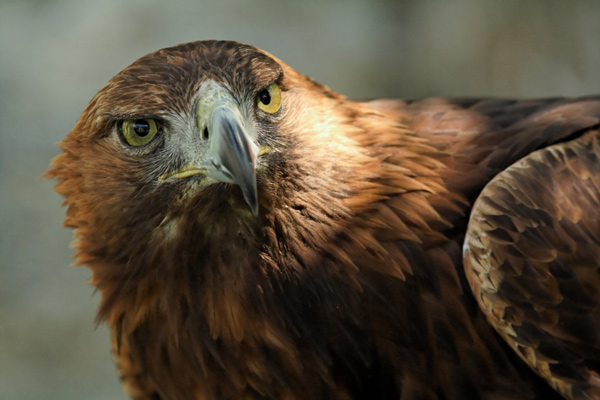At Fort Clatsop near Astoria, Oregon, Pvt. Shannon brings in a California condor and golden eagle, and Sgt. Gass and his hunting party return after several wet nights without shelter. Pvt. Joseph Field returns from the salt makers’ camp and the captains decide to close the works.
Hunting at Point Adams
by Yellowstone Public Radio[1]Originally aired weekdays by Yellowstone Public Radio during the Bicentennial observance of 2003-2006. Narrated by Hal Hansen. Scripts by Whit Hansen and Ed Jacobson. Produced by Leni Holliman. © … Continue reading
California Condor as Drawn by Clark
Gymnogyps californianus
From Reubin G. Thwaites, Original Journals of the Lewis and Clark Expedition 1804–1806 (New York: Dodd, Mead & Company, 1905), 4:80, archive.org/details/originaljournal04lewi
The California Condor
Shannon brought me one of the large carrion Crow or Buzzads of the Columbia which they had wounded and taken alive. I bleive this to be the largest bird of North America.
—Meriwether Lewis
Gass’s Tough Trip
While we were out we killed 8 elk. During one of the most disagreeable nights, myself and another lay out in our shirts and overalls, with only one elk-skin to defend us from a violent night’s rain. We had started a gang of elk, and in order to be light in the pursuit left our clothes where the first was killed, and could not get back before dark. Our shirts and overalls being all of leather made it the more disagreeable.
—Patrick Gass
Sick Men Recovering
continue the barks with Bratton, and commenced them with Gibson his fever being sufficiently low this morning to permit the uce of them. I think therefore that there is no further danger of his recovery.—
—Meriwether Lewis
Closing the Salt Works
Joseph Fields arrived from the Salt works and informed us that they had about 2 Kegs of salt on hand which with what we have at this place we suppose will be sufficient to last us to our deposits of that article on the Missouri. we there directed a party of six men to go with Fields in the morning in order to bring the salt and kettles to the fort.
—Meriwether Lewis
The Golden Eagle
Shannon also brought me a grey Eagle which appeared to be of the same kind common to the U’ States; it weighed 15 lb. and measured 7 Feet 7 Inches between the extremities of the wings.
—Meriwether Lewis
Weather Diary
aspect of the weather at rise
Wind at rise
aspect of the weather at 4 OC1 P.M. Wind at 4 O’Clock P.M. cloudy after rain, hail, & snow S W rain after fair, hail, snow & rain S W the hail and snow covered the ground this morning
—Meriwether Lewis[2]To assist the reader, the editor of this web page has omitted the “Day of ye Month” column and spelled out some abbreviations.
Experience the Lewis and Clark Trail
The Lewis and Clark Trail Experience—our sister site at lewisandclark.travel—connects the world to people and places on the Lewis and Clark Trail.
Plan a trip related to February 17, 1806:

Fort Clatsop is a High Potential Historic Site along the Lewis and Clark National Historic Trail managed by the U.S. National Park Service. The site is managed by the Lewis and Clark National and State Historic Parks.
Notes
| ↑1 | Originally aired weekdays by Yellowstone Public Radio during the Bicentennial observance of 2003-2006. Narrated by Hal Hansen. Scripts by Whit Hansen and Ed Jacobson. Produced by Leni Holliman. © 2003 by Yellowstone Public Radio. |
|---|---|
| ↑2 | To assist the reader, the editor of this web page has omitted the “Day of ye Month” column and spelled out some abbreviations. |




